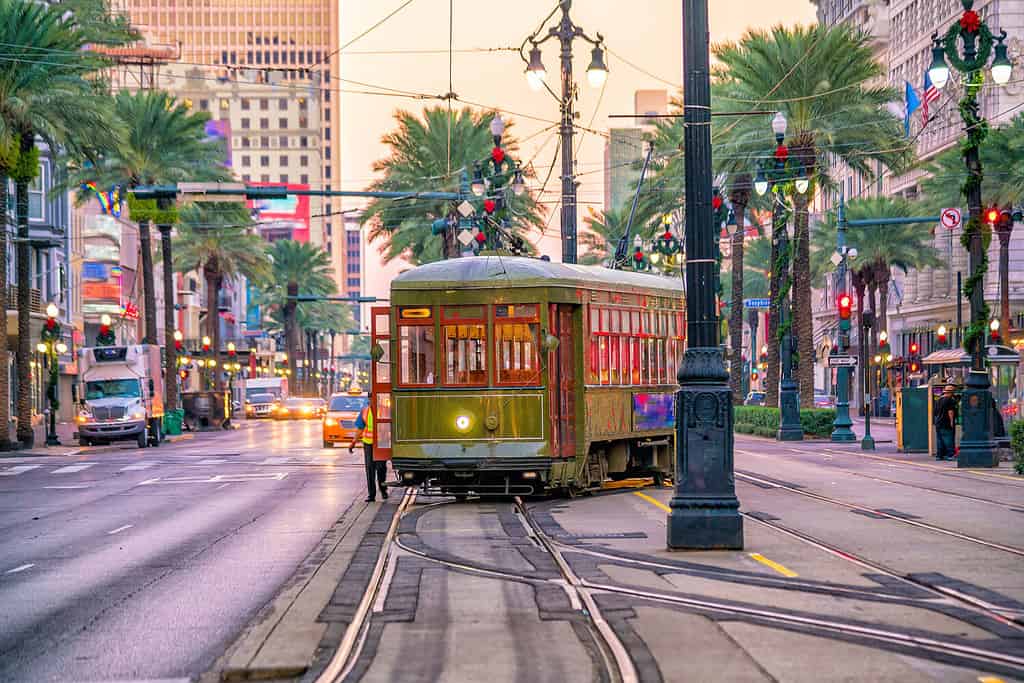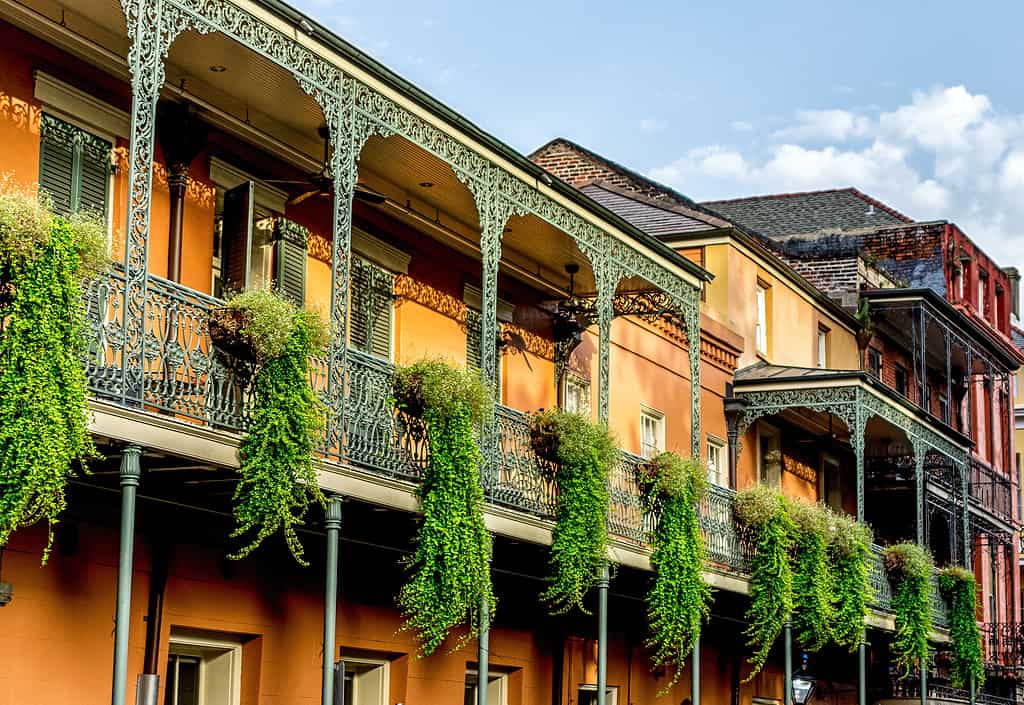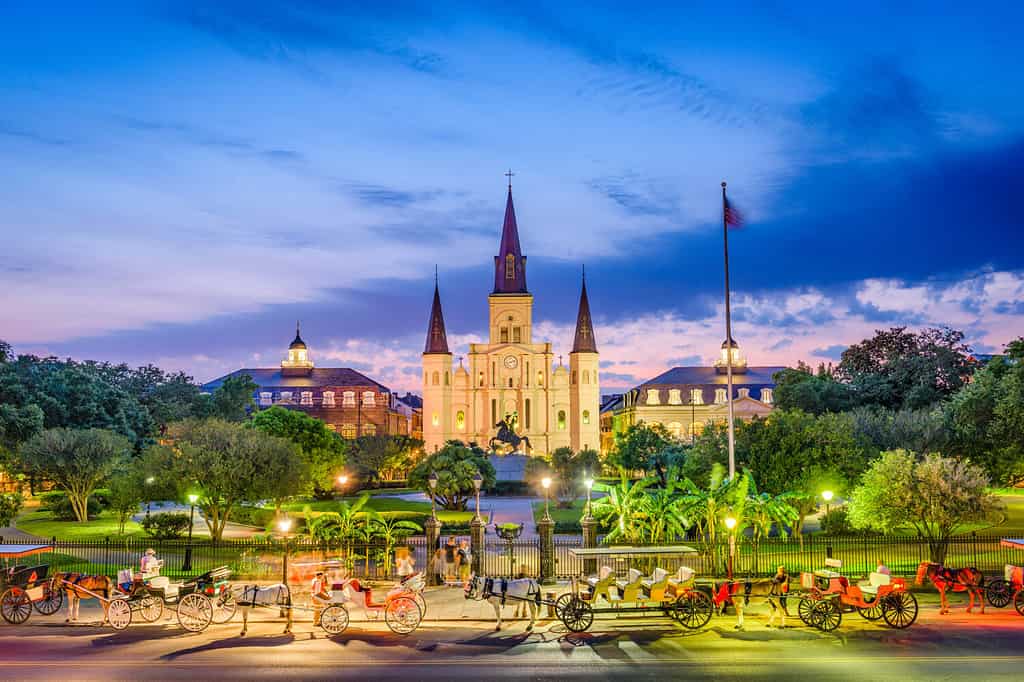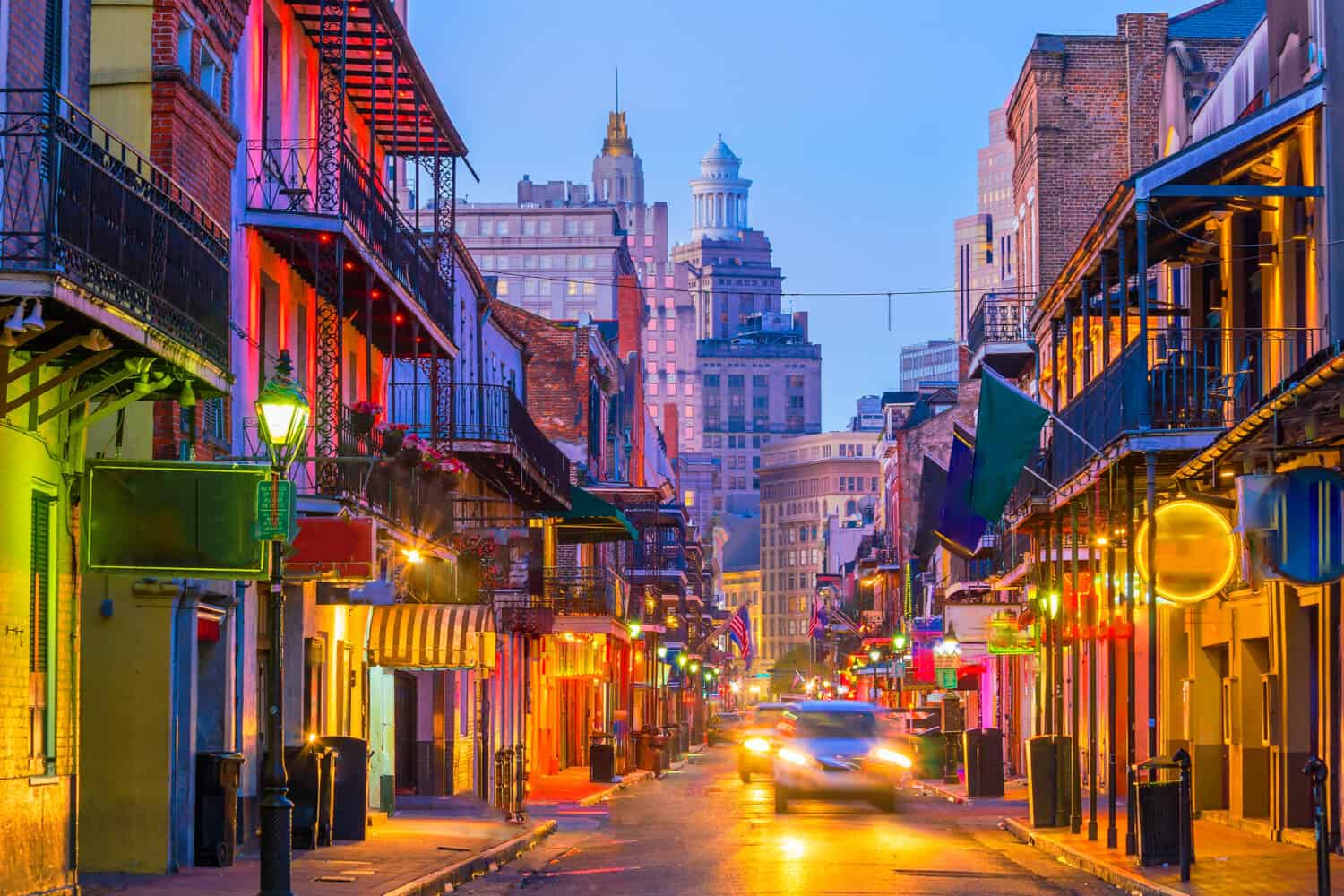New Orleans is one of the most well-known cities in the United States, and probably even the world. Everyone knows about NOLA’s French Quarter, its delicious Cajun food, and its vibrant nightlife. Although the city proper has about 384,000 people, the city has become famous to the world. The city has a fascinating history, is home to famous landmarks, and its jolly vibe has put New Orleans on the map.
Many people know about New Orleans and what it is known for, but do people know where it is? Do people know how far away it is from other major cities in the South? If you are wondering where the city known as NOLA is, let’s take a look at where it is on the Louisiana map. We’ll also explore the city’s geography, what the city is known for, the climate in the city, and other facts about NOLA.
Where is New Orleans Located on the Map?
New Orleans is a city in the state of Louisiana, which is a state in the Deep South of the US. The city of New Orleans is in the southeastern part of the state, sitting right next to Lake Pontchartrain and only about 100 miles from the Gulf of Mexico.
But where is New Orleans on the map? Let’s take a look below.
How Far Is New Orleans from Other Major Cities in the South?
New Orleans is in the Deep South and it is also in the southeastern part of the state. But because it’s a major city, it is easily accessible to other major cities in the state and surrounding states. Let’s take a look at how far New Orleans is from other cities.
| City | Population | Distance from New Orleans |
|---|---|---|
| Baton Rouge, LA | 228,590 | 73 miles |
| Montgomery, AL | 198,665 | 278 miles |
| Little Rock, AR | 202,591 | 355 miles |
| Atlanta, GA | 463,878 | 683 miles |
| Jackson, MS | 149,761 | 162 miles |
| Raleigh, NC | 451,066 | 775 miles |
| Oklahoma City, OK | 687,725 | 576 miles |
| Nashville, TN | 689,447 | 470 miles |
| Austin, TX | 964,177 | 459 miles |
| Richmond, VA | 220,289 | 894 miles |
Is New Orleans a Good Place to Live?

The French founded New Orleans in 1718, which is why the city has French roots.
©f11photo/Shutterstock.com
New Orleans’s good climate during the winter months makes it a desirable place to live for many people. The most important thing that is a definite pro is the cost of living. It’s quite affordable to rent in New Orleans, unlike other big cities around the nation. Another pro is the good food, you will never run out of good options. Likewise, living here will expand your horizons with friends and neighbors, as if you were a tight-knit family.
With all good things, however, there are also cons. New Orleans during the summers can be an awful place to live because of the high humidity and mugginess. If you don’t mind the weather, then it won’t be a problem. The risk of flooding because of hurricanes remains real. Although it’s true that the government has rebuilt the city and constructed levees to prevent flooding, there is still a viable threat in the future.
What Is the Climate in New Orleans?
New Orleans has a humid subtropical climate, where the summers get hot and wet and winters can get somewhat cold. Although the summer weather can get intense, it’s a good place to set up roots if you want to have winters that aren’t that cold.
In terms of record temperatures, New Orleans’s hottest temperature was 102 degrees Fahrenheit (39 degrees Celsius) on August 22, 1980. New Orleans’s coldest temperature was 11 degrees Fahrenheit (-12 degrees Celsius) on December 23, 1989.
New Orleans is not immune to natural disasters. Because of its proximity to the Gulf of Mexico, hurricanes happen here quite often. Some of them can be calm and won’t cause much damage, but others have done catastrophic damage. One such hurricane that caused catastrophe was Hurricane Katrina in 2005. Hurricane Katrina was a large hurricane that mainly hit the Gulf areas including New Orleans. It is the costliest hurricane that has hit the US, with a whopping $108 billion in damage. A total of 1,833 people died in the devastation.
The Geography of New Orleans

The city of NOLA came into Americans’ hands when the US bought an enormous amount of land known as the Louisiana Purchase.
©Ben Nissen/iStock via Getty Images
New Orleans is located on the Mississippi River Delta, right by Lake Pontchartrain, and close to the Gulf of Mexico. New Orleans is a city built by the water where half of it is above sea level and the other half is under. This puts the city at risk of sinking, as well as natural disasters like hurricanes and water-related disasters. NOLA is 350 square miles, although only 169 square miles is land.
What Is New Orleans Most Known For?

Because of its French roots, New Orleans was the first city to celebrate Mardi Gras in the early 1800s.
©Gregory Kurpiel/iStock via Getty Images
New Orleans is arguably one of the most famous cities in the United States. It’s known for its Mardi Gras celebrations across town that bring together the many cultures of the city. The Creole and Cajun cuisines are delicious and most attractive when eating in NOLA.
For those wanting some historical and cultural learning, head to the French Quarter and the famous Bourbon Street. There, you’ll be able to absorb the heritage of the area, but also the city’s history with voodoo. At nighttime, head to jazz bars or the many bars in the vibrant Bourbon Street or its surroundings.
For those who want something calmer, you can go to the city park for a leisurely walk or head to the Garden District for a more historical, yet quiet walk around neighborhoods. Nature lovers will love going to Couturie Forest or the Sankofa Wetland Park and Nature Trail. You can also visit some bayous for a more typical Louisiana swampland nature excursion.
Facts About New Orleans
- Population: 383,997 (Urban: 963,212)
- Mayor: LaToya Cantrell
- City Council President: J.P. Morrell
- City flower: Fleur-de-lis (Lilium bosniacum)
- Founded: 1718

NOLA is one of the most visited cities in the United States.
©Sean Pavone/Shutterstock.com
Conclusion
New Orleans is truly a majestic city. The urban area, which can grow to almost 1 million, is a diverse area that brings so much to the city to make it special. Sure, the city may have its problems and it also may have its critics, but at the end of the day, New Orleans has heart, it has soul, and it is one the best places to live in the country. The city offers so much to its residents and tourists alike.
New Orleans has a humid type of climate, especially in summer, but it doesn’t get too cold during the winter. The cost of living is not high, which makes NOLA attractive. Each neighborhood has its personality, which makes it better when making friends who can act like your family. The charm of New Orleans is there. But the New Orleans City Council indeed has to address the pressing issues, like the higher crime rate and the hurricane threats. The New Orleans City Council has a full plate in addressing the issues facing the city.
At the end of the day, New Orleans is still a wondrous city full of opportunities for its many residents. New Orleans is still a place full of historical and cultural wonders for visitors of all ages. New Orleans, after all, is home to a rich, diverse culture that makes it the Crescent City.
Thank you for reading! Have some feedback for us? Contact the AZ Animals editorial team.








